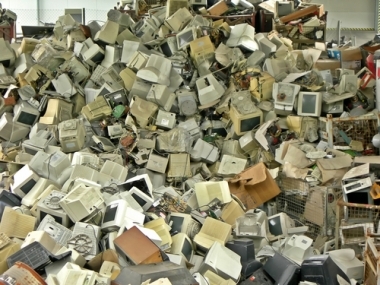Scheduled obsolescence, also called planned obsolescence, is when a product launched on the market becomes unusable or obsolete in a relatively short period of time. purposeful, that is, when companies launch goods to be quickly discarded and encourage consumers to buy again.
This phenomenon is commonly associated with the globalization process, however, its beginnings may be linked to the Great Depression of 1929. During the deep economic crisis that marked this period, faced with an impotent consumer market, it was observed that there were many industrialized products in stock and that were not traded, reducing corporate profits, increasing unemployment and, consequently, reducing consumption and increasing crisis.
Therefore, it was observed that durable products disadvantaged the economy, as they reduced consumption. Among American economists, the jargon “A product that doesn't wear out is a tragedy for business” has become popular.
The example most cited by scholars, critics and experts on the subject was a cartel organized by large companies that produced light bulbs. They organized to reduce the life of a lamp in order to increase product sales. It is known that the first lamp invented lasted about 1,500 hours; at the beginning of the 20th century, lamps had an average lifetime of 2,500. However, after the Great Depression and the formation of the cartel, the service life was abruptly reduced to 1,000 hours.
This example is portrayed in the documentary buy, take, buy, produced in 2011, in Spain, and directed by Cosima Dannoritzer. This case is representative of technical obsolescence, when the conditions of use of the product require a new purchase. In addition to this type, there is also the psychological obsolescence, when the consumer, despite having a product in good condition, decides to buy a new one and discard the old one.
Do not stop now... There's more after the advertising ;)
Another example of this situation was the case of the launch of iPad 4, from the company Apple, which was sued by the Brazilian Institute of Informatics Policy and Law for releasing the version a few months after having put the iPad 3. Users of this product, faced with the launch of a new version that had practically no technical differences, saw their product as obsolete and sought to buy the new version. It is worth remembering that this is not an action of a single company, but a collective market trend.
The consensus among specialists in technology and the consumer market is to establish campaigns to contain the rampant consumption, as well as the adoption of measures aimed at combating programmed obsolescence by the manufacturers. This is because this process can cause serious damage to the environment, since more consumption generates more waste, which has to be discarded, thus harming the natural environment.

The production of garbage generated by planned obsolescence is increasing
By Rodolfo Alves Pena
Graduated in Geography
Would you like to reference this text in a school or academic work? Look:
PENA, Rodolfo F. Alves. "Scheduled obsolescence"; Brazil School. Available in: https://brasilescola.uol.com.br/geografia/obsolescencia-programada.htm. Accessed on June 28, 2021.
Commerce, what is commerce, how commerce was in ancient times, how commerce can be related, market definition, foreign market, wholesale market, retail commerce.

